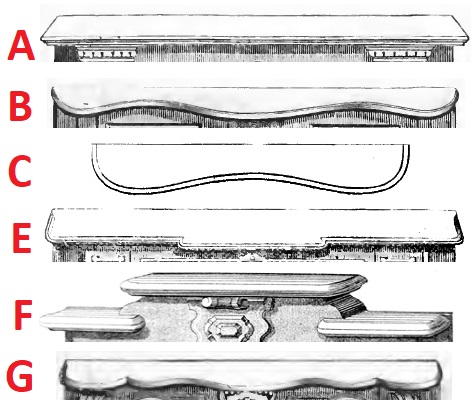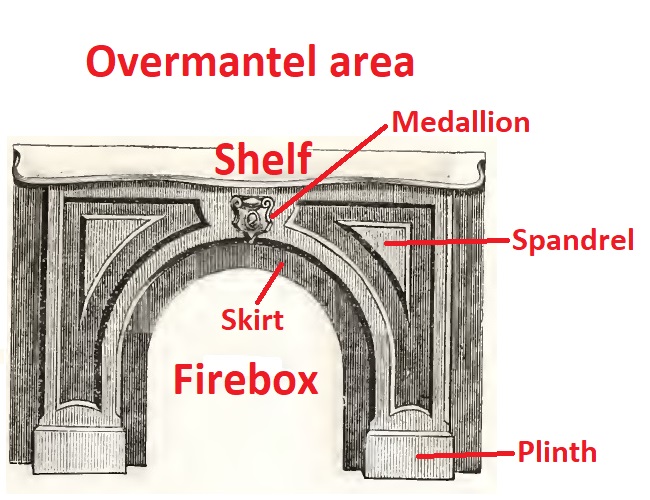Italianate mantels
| Mantels / Italianate mantels Italianate mantels were the dominant approach to mantel design from circa 1845 until 1880. Very little documentation exists on Italianate mantels prior to this analysis. The mantle shown here identifying the key elements is the most common mantel type of the third quarter of the nineteenth century. Once plan books and millwork catalogs began to appear, sufficient datum points are available to track changes in the appearance of Italianate mantels, which you can discover on these pages. Italianate mantels were discontinued in the early 1880s after J. Pickering Putnam's discoveries resulted in changes in the design of the fireplace flue. Mantels during the Italianate period were almost entirely built of either wood or slate. Italianate mantels share a number of features. The overmantel, an optional feature above the shelf, was minimized during these years (especially when compared to the 1880s). Catalogs illustrated only two mantels with large overmantels during the Italianate period (Bicknell 1872 and Bradley & Currier 1877). Of the smaller overmantels, 85% appeared in catalogs from the period 1878 to 1880, still a minority of all mantels offered for sale during these years. Overmantels were offered in three shapes: a simple rectangular shape (80%), a low merlon shape, and a shaped overmantel. The two latter ones are illustrated below. Overmantels were most likely to be offered with the arched mantel with a frieze or with the arched mantel with a spandrel, which together represent over two-thirds of overmantels offered in catalogs.  Italianate mantels used a variety of mantel shelves, and all but the simple rectangular shelf was discontinued early in the 1880s. The six types of Italianate shelves are illustrated below. All were in use throughout the 1870s except for shelf F (the merlon shelf), which only appeared in catalogs from 1877 to 1880. The six shelf types were not distributed evenly among the various types of mantels, and by clicking on the individual mantel types you can track which shelves were associated with that mantel.  With the exception of the rectangular set of Italianate mantels, the medallion was a character-defining feature of this quarter century. In addition to being decorative, the medallion served an important purpose: it covered the seam between the two spandrels. The spandrel was a new feature of mantels. While primarily decorative, spandrels brought a decorative touch to Italianate mantels. A common approach to spandrel design was to incorporate a pressed wood design with the general shape of a triangle with one rounded side. This shape points back in time to the cranes found in mantels a century earlier; this approach is almost universal in arched mantels. Below the spandrel, Italianate mantels often used a skirt that made the transition to the summer front, an iron element that could be installed in front of the fire box in warm months. |



